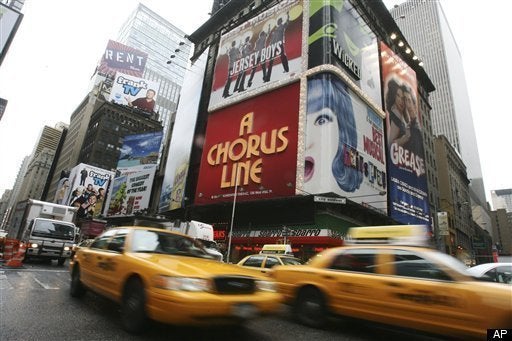
Publishers might be the ones mulling over the future of digital publishing, but the Broadway community has an opportunity take advantage of the new wave of digital consumption created by Apple's iPad. While 2010 might have been considered the "year of the tablet computer," -- Apple's iPad was the big player amongst consumers -- analysts predict approximately 6.53 million iPads were sold just over the holidays, according to TUAW.com.
As press representatives deal with the horribly expensive debacle that is Spider-man: Turn Off The Dark, the publishing arm of Broadway, Playbill, could look to magazines like the New Yorker and Gourmet, both of which launched iPad applications last year. These interactive digital magazines provide Conde Nast with a new method of engaging with its readers, something Broadway has been slow to consider.
There is a seemingly endless number of Broadway-themed websites sprouting up around the internet, but with Playbill, a staple of theater going in New York City and beyond -- first published in 1884, Playbill now creates its golden yellow booklet for theaters across the country -- audiences have built up a familiarity with the brand. Playbill.com underwent a recent re-design and original video content has started appearing on the website, but there remains a disconnect between show-specific content and the printed booklets freely handed out to every ticket holder attending a show.
It would be heresy to suggest that the printed Playbill be replaced by a digital replica -- the idea of e-books replacing physical books remains a horrifying thought -- however, there is a wide-open landscape on the iTunes app store, merely waiting for serious Broadway content. A quick search of the term "Broadway" in iTunes resulted in eight iPad apps, none of which were meant to deliver theatre news or information to readers.
Web users are increasingly looking to digital devices for newspaper or magazine content, with 18% of online readers paying for news content and 21% spending their money on that same information on cellphones and tablet computers, according to a recent Pew survey. Considering that Broadway League's annual report, "The Demographics of the Broadway Audience 2009-2010," found online ticket purchases the most popular method amongst theatergoers six years straight; there is a great opportunity to take advantage of a digitally-savvy audience.
When jumping into the world of iPad magazine publishing, there are a few things to steer clear of, including the creation of carbon copy articles, whether those pieces are from a printed source or website. Gigaom.com recently reviewed the year in media iPad apps, favoring those that took advantage of interactivity and social networking, like Gourmet Live and the Huffington Post's latest iPad versions. The New York Times iPad app received some of the worst marks, mostly for its lack of excitement. Playbill must look beyond its website and in-theater booklets, instead focusing on engagement and digital creativity.
Gourmet Live's iPad app excels with vivid photography, something many iPad users find most pleasing about the tablet device -- a Time Inc. study found that 86% of respondents noticed "striking photos and bright visuals" in iPad advertisements. Fortunately, Broadway is full of amazing images, thanks in part of photographers like Carol Rosegg, who has been documenting Broadway productions for decades, and the countless creative types designing every aspect of a stage production.
Another aspect of the iPad that appeals to its users is the ability to play high-quality video. A digital Playbill could incorporate not only the performance footage shot by each production for promotional purposes, but also the behind-the-scenes content, currently on the rise around the web. Production value does matter, however, as amateur-style backstage video, like that found on YouTube, appears all over Broadway websites. Like Gourmet's reliance on beautiful photos, so should Playbill's iPad app with video.
Now that Apple allows in-app purchasing, some of the popular iPad magazines are charging for each monthly issue. Asking a reader to pay for online content must come with an assurance of either uniqueness or quality, although hopefully both would be accomplished with every download. Playbill could experiment with $0.99 for individual Broadway show editions, all purchased within a larger Playbill iPad app. Provide theatergoers access to free WiFi before the curtain rises -- to inhibit downloading during a play, simply kill the connection once a show begins -- or include download instructions inside of each traditional Playbill.
Should Playbill, or any Broadway publication, be able to move beyond the mantra of "If you build it they will come," and focus its energy on creating an interactive, visually appealing, and interesting to manipulate iPad publication, future theatergoers will have something to look forward to while attending a show. Not everything Broadway-related has to be targeted towards the blue-haired matinee ladies.
